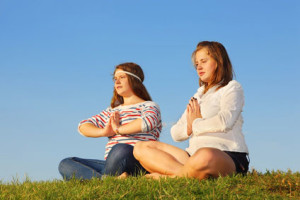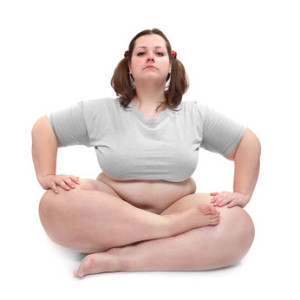 It is a belief that when fat people exercise, they will become healthy and thinner. Indeed, one of the most challenging factors of fighting obesity is the incorporation of exercises and physical activities into the lifestyles of those individuals who have very limited mobility because of their increased weight.
It is a belief that when fat people exercise, they will become healthy and thinner. Indeed, one of the most challenging factors of fighting obesity is the incorporation of exercises and physical activities into the lifestyles of those individuals who have very limited mobility because of their increased weight.
With this, low-impact exercises such as yoga provide a better entry point in introducing exercises that are beneficial or suitable for these types of lifestyles and at the same time, focus on flexibility and balance – two concepts that can be intimidating for obese individuals. Choosing an appropriate yoga class, with a good instructor is appropriate for an obese person to achieve a great yoga experience.
Why choose Yoga?
Although most people with plus size wants to lose weight immediately, it is a fact that this does not happen all too easy for them. It, sometimes would take a great amount of effort to stay healthy especially with this kind of body type. However, any style of yoga can help tone, strengthen, and lengthen the muscles, which can contribute to sculpting and shaping the body, not necessarily to lose weight.
The most common physical benefit of yoga is that it loosens the muscles that were tightened because of inactivity, tension, and stress. Thus, it helps obese people increase range of motion joints, enhance their flexibility, as well as correct postural problems that could have resulted from gaining weight.
 Yoga is also a moderately paced, low-impact, and a progressive exercise that is suitable for a person who is just beginning to get into the exercise routine. It is perfect to a person who has limited mobility and they can easily adapt to it because many poses can be done while in sitting or prone position. It also allows the person to have his or her own pace without disturbing or disrupting the sessions of others. Meanwhile, if an obese person prefers to practice yoga at home, at-home practices and instructional videos are also available.
Yoga is also a moderately paced, low-impact, and a progressive exercise that is suitable for a person who is just beginning to get into the exercise routine. It is perfect to a person who has limited mobility and they can easily adapt to it because many poses can be done while in sitting or prone position. It also allows the person to have his or her own pace without disturbing or disrupting the sessions of others. Meanwhile, if an obese person prefers to practice yoga at home, at-home practices and instructional videos are also available.
The exercise also does not require any special equipment, so there is no need for you to purchase expensive exercise machines or any high-priced gears. All you need is a yoga mat, used as an aid when practicing yoga to prevent hands and feet from slipping.
How do I start learning Yoga?
For starters, it is better to start learning yoga from a qualified instructor. Specialized yoga classes for plus size individuals are available, but are not common. The first thing that you need to do is to identify what type of plus size are you? There are generally four types of obese people when taking up yoga classes. These are:
The Athletic but Fat person. This type of person has more weight but is evenly distributed over the entire body. People who belong in this type are active and heavy and can fit to a traditional yoga class but instructors should not place too much weight on his ankles and knees. People in this type might need more props and extra blankets to help them do a pose.
 The Soft, Large and Flexible. Most of the weight in this person’s body is in her belly, stomach and buttocks. These people can sit on the floor with legs spread or crossed, and may even touch her head to the floor. People in this group can do many poses and enjoys stretching their bodies however poses like sun salutations, headstands, lunges, shoulder stands, and triangle poses are not recommended.
The Soft, Large and Flexible. Most of the weight in this person’s body is in her belly, stomach and buttocks. These people can sit on the floor with legs spread or crossed, and may even touch her head to the floor. People in this group can do many poses and enjoys stretching their bodies however poses like sun salutations, headstands, lunges, shoulder stands, and triangle poses are not recommended.
Very Inactive, Inflexible, and Unhealthy. This type is the type that sits all day and then goes home and watches TV all night long. People who belong to this type are health-challenged and can be suffering from stress or any inactivity-related issues. They will not fit into a regular yoga class well. One healthy yoga program for this type of people is to begin with a very slow, preferably a private yoga class. This will allow you to open or slowly introduce the poses to their bodies slowly and carefully, and at the same time, building their confidence on the exercise.
The Supersized. This type is over 100, sometimes 200 or 300 pounds overweight, and as simple as lifting their arms can be a challenge to them. This individual cannot get up or down the floor, or be on his or her feet for long periods of time. A good yoga class for this type of people would include chair yoga, and sit and stand yoga; however the instructor should work with them individually or in a small group, preferably ones in the same type.
The next thing that you will need to do after determining your size is to choose an instructor or a yoga class that will suit you. This is the integral part of doing yoga, because you are working with your instructor most of the time and it is best if you can communicate with them openly. You should be able to ask your instructor what type of program is right for you and your body and what poses you can do and cannot do.
At the same time, if you are not ready for a group yoga class, you can negotiate or ask your instructor for a private lesson. You can also benefit from private lessons especially when learning basic poses, and in building up confidence on how to use props effectively until such time that you will be prepared to join a group.
It is unfortunate if obese people choose not to participate in yoga classes, especially with the benefits that it can do for them. One way to remedy this is by becoming more knowledgeable about yoga so that you will feel at ease and can positively benefit from the physiological and psychological effects of yoga. There are already specialized yoga classes that are designed for obese people in order for them to enjoy practicing and not feel embarrassed or ashamed.
